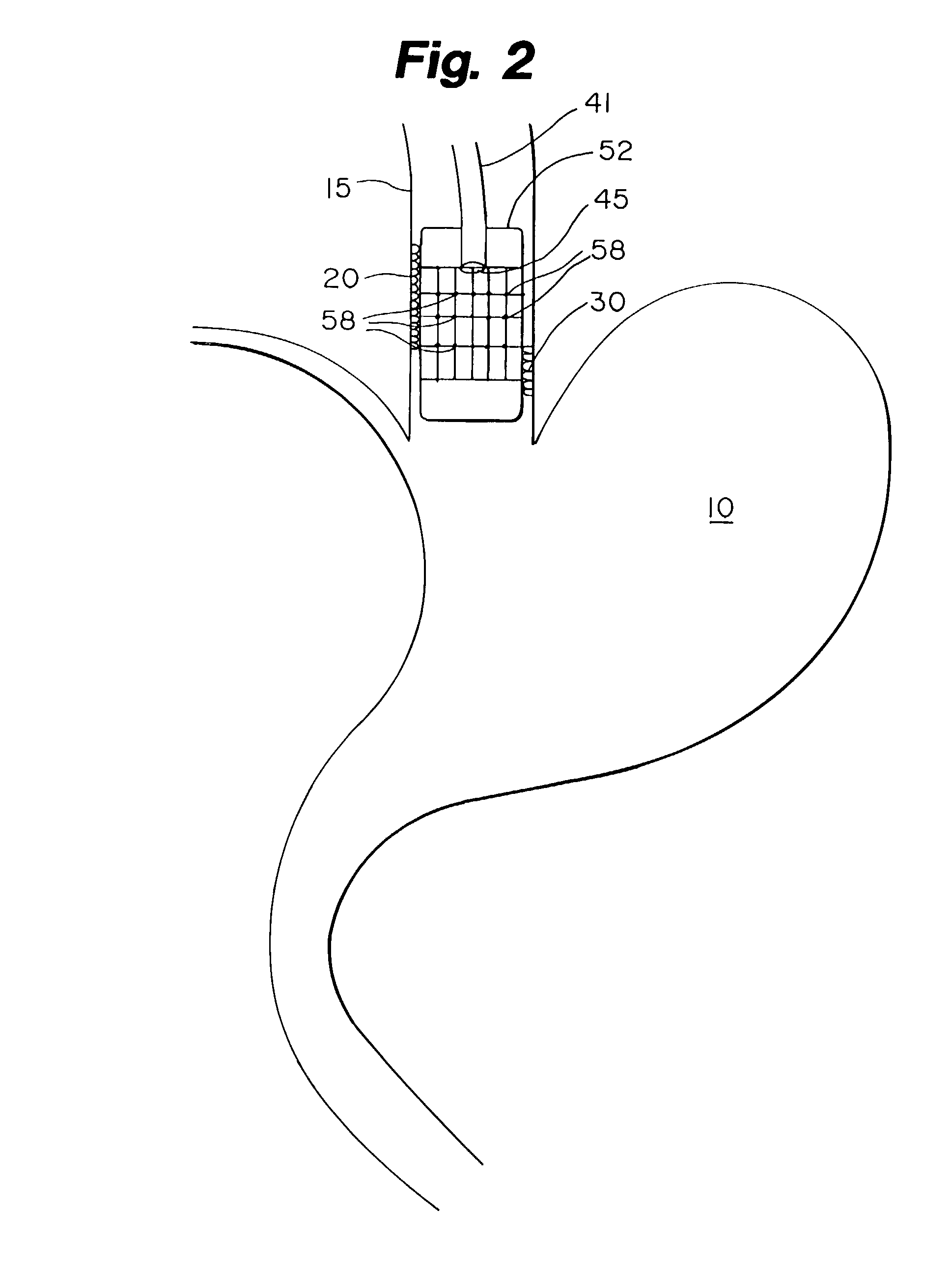Method of treating abnormal tissue in the human esophagus
a technology of abnormal tissue and esophagus, which is applied in the field of treating abnormal tissue in the human esophagus, can solve the problems of reflux esophagitis and the lower relaxation of the stomach, and achieve the effect of improving the sensitizer agen
- Summary
- Abstract
- Description
- Claims
- Application Information
AI Technical Summary
Benefits of technology
Problems solved by technology
Method used
Image
Examples
Embodiment Construction
[0014]Various inflammatory disorders result in human patients who experience retrograde flow of gastric or intestinal contents from the stomach 10, as shown in FIG. 1, into the esophagus 15. This flow is shown by arrows A and B in FIG. 1. Although the causation of these problems are varied, this retrograde flow may result in secondary disorders which require treatment independent of and quite different from treatments appropriate for the primary disorder—such as disorders of the lower esophageal sphincter 18. One type of inflammatory disorder is known as Barrett's esophagus, in which the stomach acids, bile acids and enzymes regurgitated from the stomach and duodenum enter into the lower esophagus causing damage to the esophageal mucosa. Indeed, when this type of retrograde flow occurs frequently enough, damage may occur to esophageal epithelial cells 20. When normal replacement of damaged cells is overcome by the rate of damage, then the result may be symptomatic destruction of the...
PUM
 Login to View More
Login to View More Abstract
Description
Claims
Application Information
 Login to View More
Login to View More - R&D
- Intellectual Property
- Life Sciences
- Materials
- Tech Scout
- Unparalleled Data Quality
- Higher Quality Content
- 60% Fewer Hallucinations
Browse by: Latest US Patents, China's latest patents, Technical Efficacy Thesaurus, Application Domain, Technology Topic, Popular Technical Reports.
© 2025 PatSnap. All rights reserved.Legal|Privacy policy|Modern Slavery Act Transparency Statement|Sitemap|About US| Contact US: help@patsnap.com



